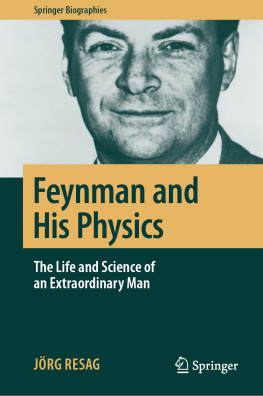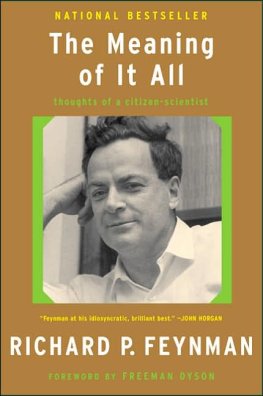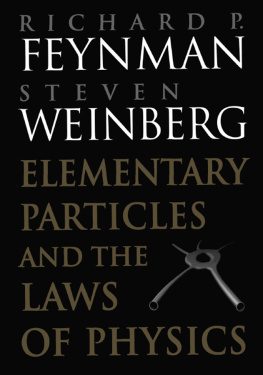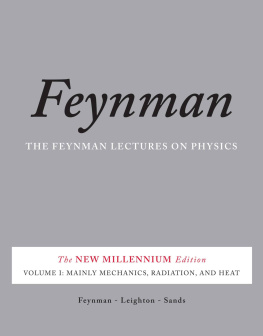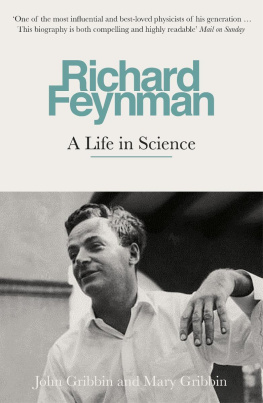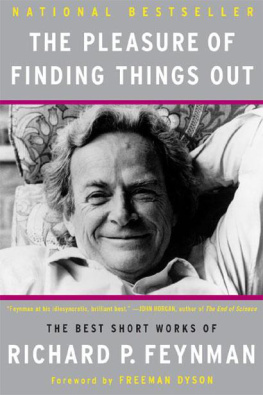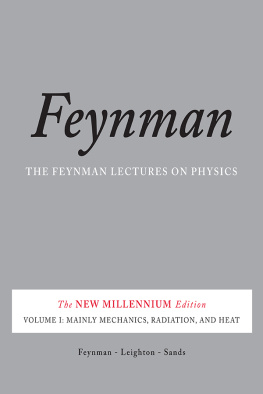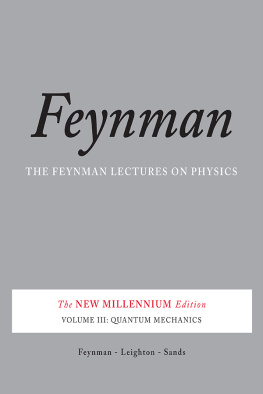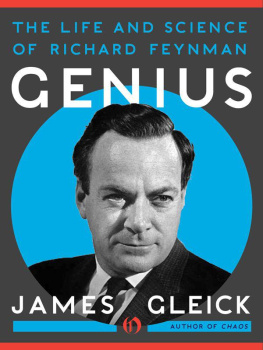Jörg Resag - Feynman and His Physics: The Life and Science of an Extraordinary Man
Here you can read online Jörg Resag - Feynman and His Physics: The Life and Science of an Extraordinary Man full text of the book (entire story) in english for free. Download pdf and epub, get meaning, cover and reviews about this ebook. year: 2018, publisher: Jörg Resag, genre: Non-fiction / History. Description of the work, (preface) as well as reviews are available. Best literature library LitArk.com created for fans of good reading and offers a wide selection of genres:
Romance novel
Science fiction
Adventure
Detective
Science
History
Home and family
Prose
Art
Politics
Computer
Non-fiction
Religion
Business
Children
Humor
Choose a favorite category and find really read worthwhile books. Enjoy immersion in the world of imagination, feel the emotions of the characters or learn something new for yourself, make an fascinating discovery.
- Book:Feynman and His Physics: The Life and Science of an Extraordinary Man
- Author:
- Publisher:Jörg Resag
- Genre:
- Year:2018
- Rating:3 / 5
- Favourites:Add to favourites
- Your mark:
- 60
- 1
- 2
- 3
- 4
- 5
Feynman and His Physics: The Life and Science of an Extraordinary Man: summary, description and annotation
We offer to read an annotation, description, summary or preface (depends on what the author of the book "Feynman and His Physics: The Life and Science of an Extraordinary Man" wrote himself). If you haven't found the necessary information about the book — write in the comments, we will try to find it.
Jörg Resag: author's other books
Who wrote Feynman and His Physics: The Life and Science of an Extraordinary Man? Find out the surname, the name of the author of the book and a list of all author's works by series.
Feynman and His Physics: The Life and Science of an Extraordinary Man — read online for free the complete book (whole text) full work
Below is the text of the book, divided by pages. System saving the place of the last page read, allows you to conveniently read the book "Feynman and His Physics: The Life and Science of an Extraordinary Man" online for free, without having to search again every time where you left off. Put a bookmark, and you can go to the page where you finished reading at any time.
Font size:
Interval:
Bookmark:
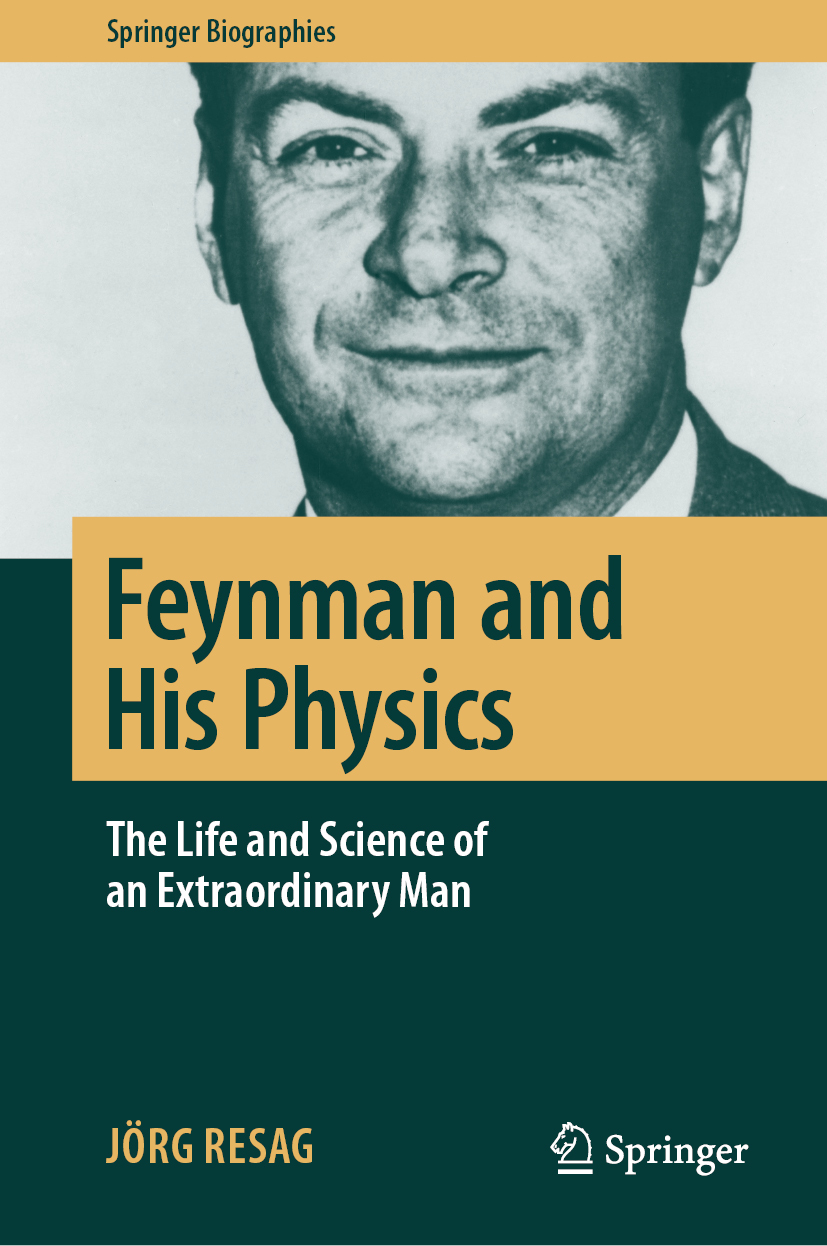
More information about this series at http://www.springer.com/series/13617

Cover photo: Everett Collection/Picture Alliance
This Springer imprint is published by the registered company Springer Nature Switzerland AG
The registered company address is: Gewerbestrasse 11, 6330 Cham, Switzerland
If you ask people about the most important physicists of modern times, you will hear some names over and over again. Albert Einstein will certainly be there, as will Isaac Newton and Galileo Galilei. Stephen Hawking will also be known to many, for example, through his bestseller A Brief History of Time or the television series The Big Bang Theory. But where does Richard Feynman stand, the subject of this book?
At the turn of the millennium, the well-known physics portal Physics World of the British Institute of Physics ( :
1. Albert Einstein | Special and General Theory of Relativity |
2. Isaac Newton | Laws of Motion and Gravitation |
3. James Clerk Maxwell | Equations of Electrodynamics |
4. Niels Bohr | Quantum Mechanics, Bohr Model of the Atom |
5. Werner Heisenberg | Quantum Mechanics, Uncertainty Principle |
6. Galileo Galilei | Law of Inertia, Falling Bodies, Refracting Telescope |
7. Richard Feynman | Quantum Electrodynamics, Feynman Diagrams |
8. Paul Dirac | Quantum Mechanics, Dirac Equation |
9. Erwin Schrdinger | Quantum Mechanics, Schrdinger Equation |
10. Ernest Rutherford | Rutherford Model of the Atom, Gold Foil Experiment |
Other names such as Enrico Fermi, Max Planck, or Michael Faraday would have deserved a place here as well. Stephen Hawking does not appear in the listmaybe it is just too early to assess his contribution to physics correctly.
Most people will probably not be surprised that Albert Einstein is at the top. At the beginning of the twentieth century, he influenced physics like hardly anyone else, revolutionizing our views on the nature of space and time and revealing their deep connection to gravity. His Special and General Theory of Relativity forms the basis of modern physics.
Isaac Newton and James Clerk Maxwell are also clearly among the leaders. They formulated the basic laws of motion, gravitation, and electromagnetism and thus laid the foundations for the whole of classical physics.
Other names are closely associated with the development of quantum mechanics, which challenged our physical worldview in the 1920s and continues to do so today. Along with the theory of relativity, quantum mechanics is the second cornerstone of modern physics and we will encounter both of them on many occasions in this book.
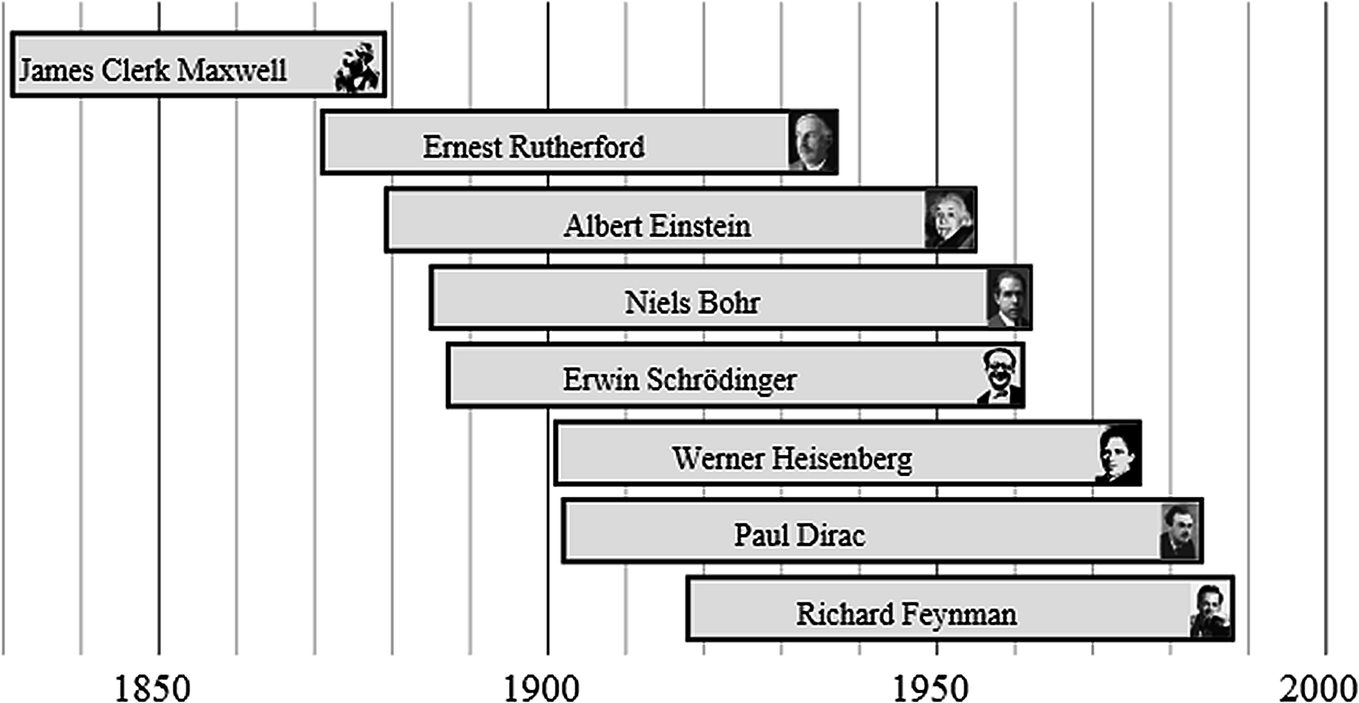
Lifetimes of the most famous physicists since 1830
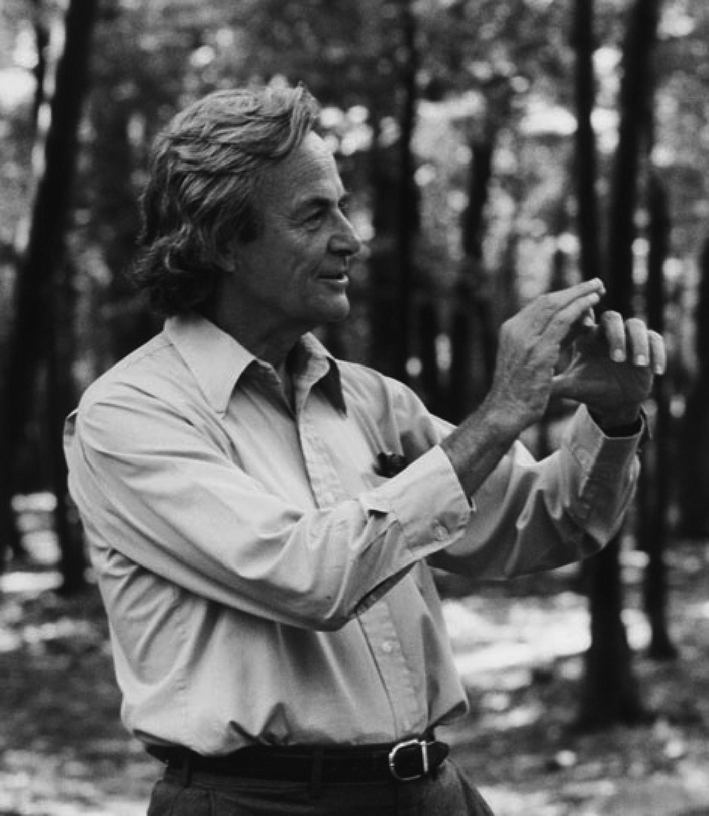
Richard Feynman in 1984 @ Tamiko Thiel, CC-BY-SA 3.0 Unported
Richard Feynman (Fig. ) was one of the most remarkable and famous physicists in the mid- and late twentieth century. On the one hand, this was due to his outstanding achievements in physics, to which we will return in detail in this book. Feynman belonged to the first generation of young physicists who were already familiarized with quantum mechanics during their studies. Prepared in this way, he and some of his colleagues later succeeded in overcoming the enormous difficulties that arose in combining Einsteins Special Theory of Relativity with the principles of quantum mechanics. While his colleagues mostly relied on abstract mathematical formalisms, Feynman followed a more intuitive approach that was typical of him. Based on his own vivid idea of the quantum behavior of particles, he created a completely new formulation of quantum theory which has become the standard tool in relativistic quantum theory today: path integrals and Feynman diagrams. Together with Julian Schwinger and Shinichir Tomonaga, he received the Nobel Prize for physics in 1965.
But Feynman was not satisfied with that. He was interested in many aspects of physics and was reluctant to commit himself to a single specialty. With his physical intuition, his mathematical abilities, and his deep understanding of quantum theory, he was also able to lead the way in other areas of physics, for example, in the physics of low temperatures (superconductivity and superfluidity). Regarding the so-called weak interaction that triggers, among other things, the radioactive beta decay of atomic nuclei, he and others explained how nature violates the law of reflection symmetry nature fundamentally distinguishes between right and left! In particle physics, he showed how the data for the scattering of high-energy electrons on protons could be explained by the fact that the electrons were deflected by point-like particles within the protons (partons or quarks).
Font size:
Interval:
Bookmark:
Similar books «Feynman and His Physics: The Life and Science of an Extraordinary Man»
Look at similar books to Feynman and His Physics: The Life and Science of an Extraordinary Man. We have selected literature similar in name and meaning in the hope of providing readers with more options to find new, interesting, not yet read works.
Discussion, reviews of the book Feynman and His Physics: The Life and Science of an Extraordinary Man and just readers' own opinions. Leave your comments, write what you think about the work, its meaning or the main characters. Specify what exactly you liked and what you didn't like, and why you think so.

